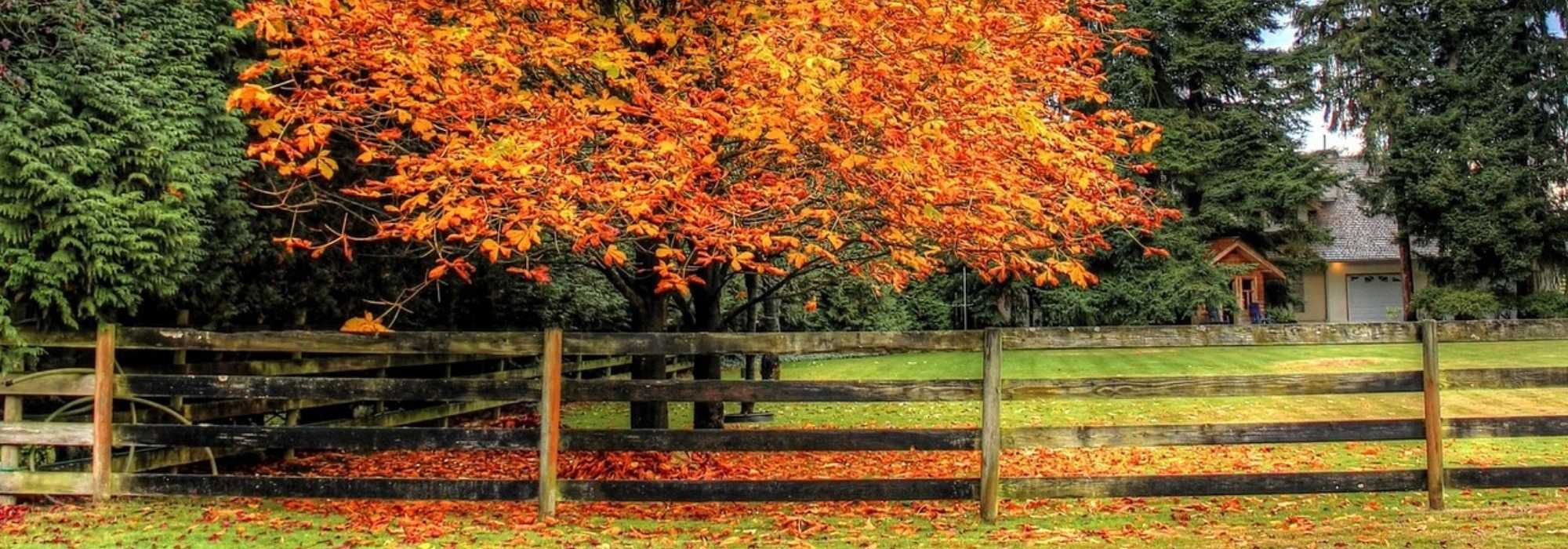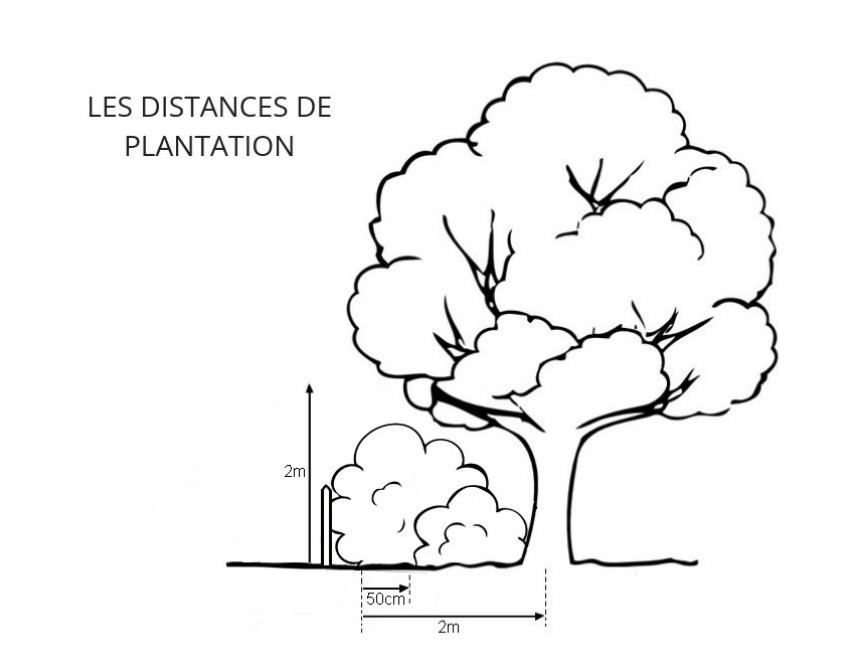
Planting trees and bushes: what does the law say? 8 questions and answers
to prevent or put an end to neighbourhood disputes
Contents
In the garden, concerning trees and bushes, a number of rules established in rural, civil and forestry codes help limit neighbourhood disputes. To avoid them or put an end to them, it is therefore important to know your rights as well as your duties.
Most of the time, problems are settled amicably, simply explain reasons for your inconvenience tactfully. But sometimes the other party persists in making no changes, and you may need to go through mediation via a conciliator of justice. The town hall, via the “rural warden” if one exists, can also intervene. If no solution is found, the county court should be contacted.
Here is what the law says about planting trees or bushes, bearing in mind that your municipality may have made modifications by means of a municipal order or estate regulations, which you are invited to consult at the town hall.
How far from the neighbouring property can I plant my hedge?
- Any tree or hedge must be planted at least 50 cm from the boundary (we will discuss maximum height below). This distance should, in theory, allow you to prune your hedge from your own land.
- If your garden borders a departmental or municipal road, the same rule applies: you may only plant at least 50 cm from the boundary.
My advice:When planting, don’t hesitate to increase distances by 30 to 50 cm. Some hedges quickly become dense and it’s always nicer to prune comfortably from your own property rather than having to step into neighbour’s garden, even temporarily (especially if you’re not on good terms!).
Read also
Gardening in condominiumWhat is the maximum authorised height for a hedge or trees?
- A hedge or tree planted less than 2 m from the property boundary must not exceed 2 m in height.
- If your tree or hedge is planted more than 2 m away, any height is permitted. As with a tall building erected in front of your windows, you cannot claim that it blocks your sunlight or view.
Thus you can require your neighbour to cut back their hedge or tree to 2 m if they are planted less than 2 m from the property boundary.

Discover other Shrubs
View all →Available in 0 sizes
Available in 1 sizes
Available in 1 sizes
Available in 1 sizes
Available in 1 sizes
Available in 1 sizes
Available in 1 sizes
Available in 1 sizes
Available in 1 sizes
Available in 1 sizes
How can I force my neighbour to cut down large trees? Thirty-year limitation period
If trees are planted less than two metres from the property boundary, you can ask for them to be severely cut back to 2 metres high. You cannot force your neighbour to have them felled. However, there is an exception: old trees. Indeed, there is a rule known as the “thirty-year prescription” that can be invoked if it can be proven these plantings already exceeded 2 metres 30 years ago! It also applies to hedges.
A local news story indeed tells how an old hazel hedge was saved thanks to this. Counting tree rings allowed an arboricultural expert to determine the height that stems of the same diameter had reached 30 years earlier by comparing them with certain current shoots. The fact that they exceeded 2 metres in height enabled the prescription to be applied and the hedge to be kept in its present dimensions.
Did you know?Experts can estimate tree age, but aerial photographs and even old garden photos can help support the case.

No tree, no problem, no life!
Read also
How to plant a tree?Is it legal to cut the roots of a neighbour's tree that encroach on your property?
Yes, you have the right to cut the roots of trees close to the boundary of your property.
My advice :Cutting the roots of your neighbour’s trees is not necessarily a good idea if you value their presence. By removing their roots, you will weaken the trees and they may die back… which would deprive you of them! Moreover, and it goes without saying, if you insist on removing the roots of those trees, it’s best to warn your neighbour, who may be surprised to see some branches die back…
Are you allowed to cut your neighbour's tree branches?
No, if branches of your neighbour’s tree overhang your property, you can require your neighbour to cut them back at the property boundary, but you cannot do it yourself unless your neighbour gives you written permission.
Can you complain about your neighbour's leaves falling on your property?
No, if wind carries dead leaves from your neighbour’s tree onto your land, you must accept it. Leaf fall is a natural phenomenon and constitutes a normal neighbourhood nuisance. However, if accumulation of leaves causes excessive damage such as blocked gutters or build-up on the roof, discuss it with your neighbour because, should the courts be engaged, they could rule in your favour.

My advice :
Whether trees are yours or your neighbour’s, think carefully before deciding to fell them. Bear in mind that in this period of climate warming and massive deforestation, any vegetation plays a positive role as a natural air conditioner (providing shade and cooling the air through evapotranspiration of the foliage), in filtering pollutants, in maintaining biodiversity, etc. Furthermore, felling a tree may also require authorisation if it is protected.
Can you pick fruit from a neighbour's tree that overhangs your property?
- No (and even if it’s tempting) you do not have the right to pick fruit from branches that overhang your property. But you may collect any fruit that has fallen on the soil of your property (it’s all a matter of patience!). Finally, should the situation arise, be aware that your neighbour has absolutely no right to claim fruit you have collected (even less so if it has already been turned into jam)!
- However, if it is a shared hedge, half the harvest belongs to you!
Can I place climbing plants against a wall that separates me from my neighbour?
It depends on whether the wall is party or private.
- No — in the case of a private wall, only the owner may plant against it even if the construction is unsightly on your side, unless an agreement is reached, preferably in writing. You also cannot compel them to render it or to plant anything to improve its appearance.
- For party walls, the rule concerning trees and bushes does not apply to trained plants such as espalier fruit trees or climbing plants. Against a party boundary wall, it is therefore permitted to plant at the foot of the wall provided the trained plant does not rise above the top of the wall. If the wall is party, your neighbour may do the same on their side.

- Subscribe!
- Contents










































Comments